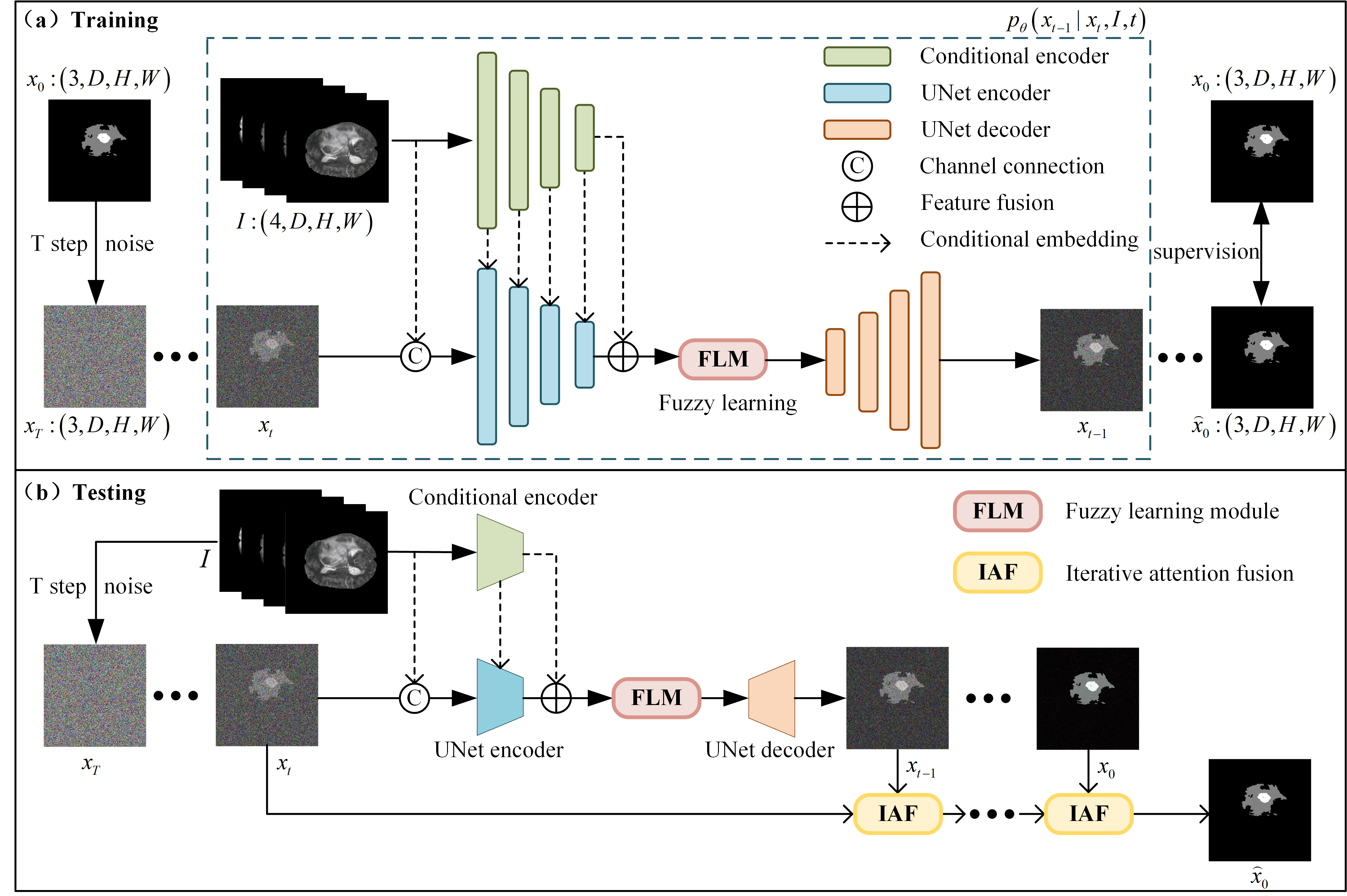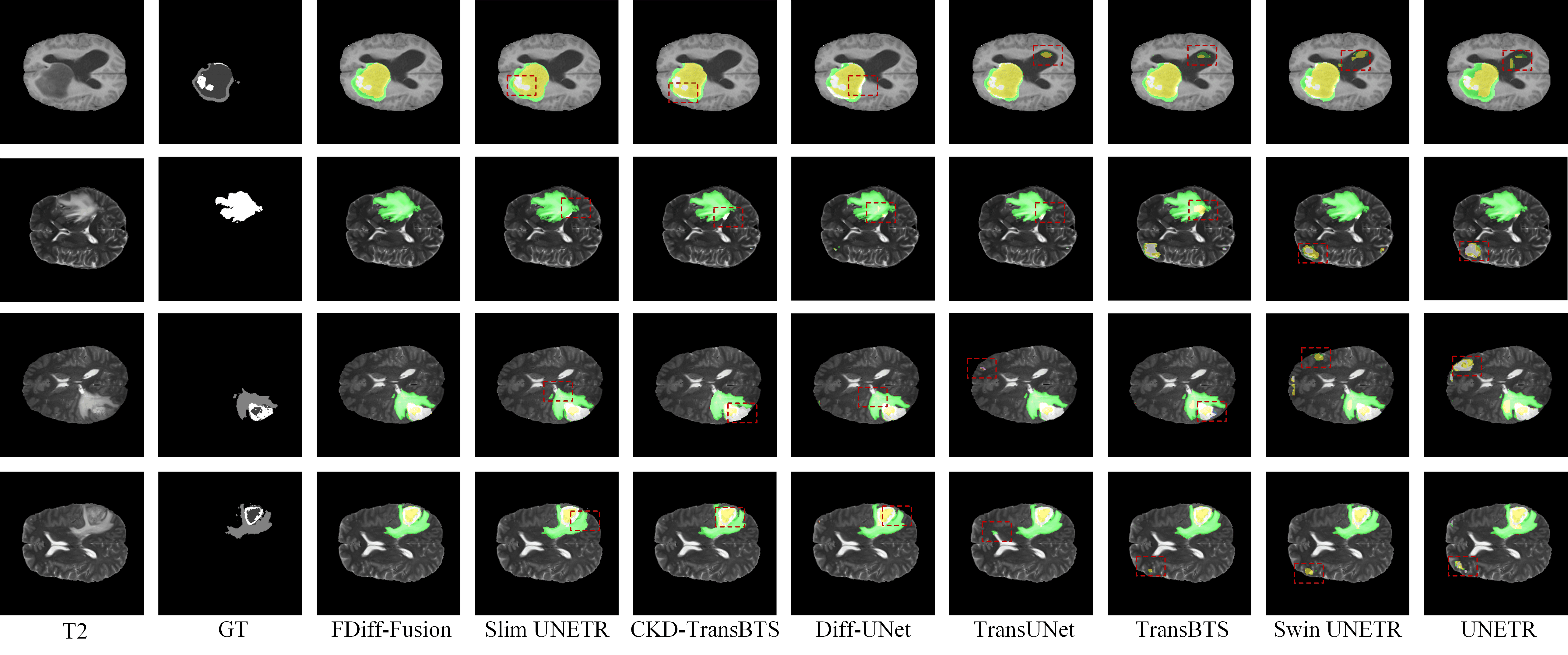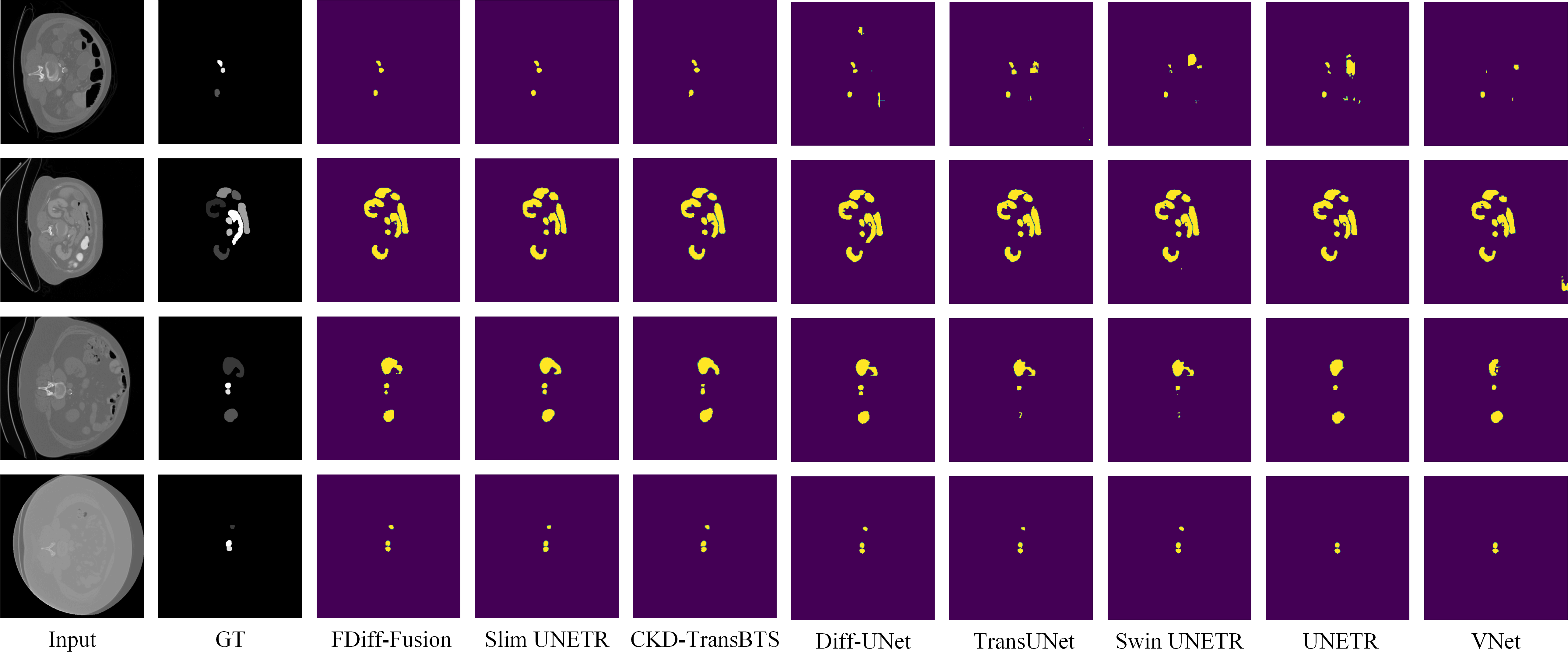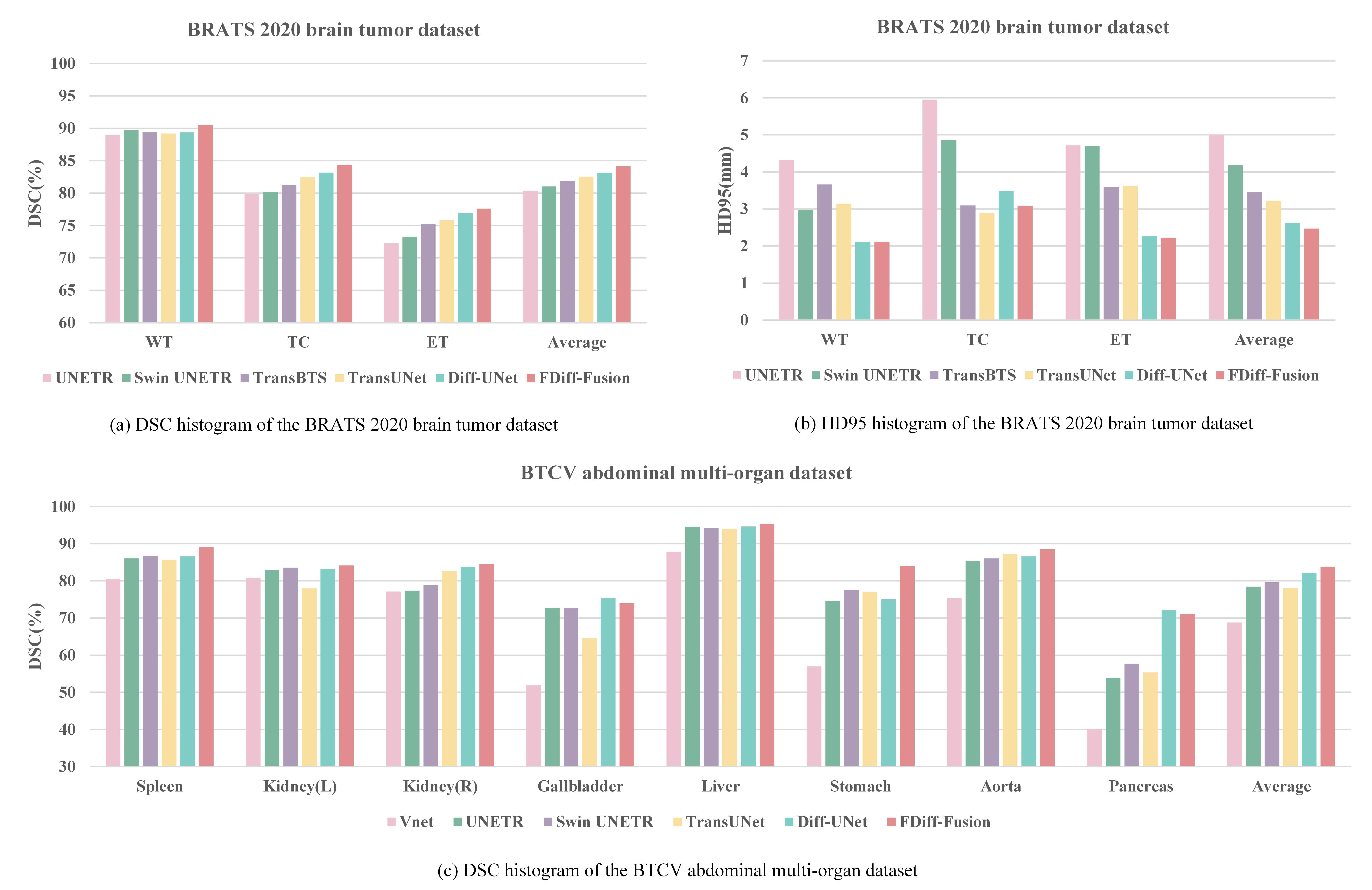FDiff-Fusion: Denoising diffusion fusion network based on fuzzy learning for 3D medical image segmentation
Weiping Ding*, Sheng Geng, Haipeng Wang, Jiashuang Huang, Tianyi Zhou
MOTIVATION
Traditional methods used for brain tumor and abdominal multi-organ segmentation often require doctors to possess rich experience and professional knowledge. Moreover, the segmentation process is complex and time-consuming, making it susceptible to subjective factors and errors. Therefore, automated medical image segmentation techniques play a crucial role in enhancing diagnostic accuracy and clinical efficiency.
Despite the significant success of denoising diffusion models in the field of image segmentation, there are still some challenges and problems to be solved for medical image segmentation. For example, medical images have large individual differences and are often subject to various forms of noise interference, includes signal interference from electronic devices, motion artifacts during imaging, and noise based on physical properties. Moreover, the segmentation boundary uncertainty and region blurring phenomenon of the segmentation target in medical images are common.
INNOVATION
To address the uncertainty of segmentation boundaries and the fuzziness of regions in medical image segmentation, we introduced a fuzzy learning module. This module sets multiple fuzzy membership functions for input encoding features to describe the similarity between feature points. By applying fuzzy rules to these fuzzy membership functions, it enhances the model's capability to model the uncertainty of segmentation boundaries and the fuzziness of regions.
To enhance the accuracy and robustness of the model's prediction results, we propose a fusion module based on an iterative attention mechanism. This module optimizes the final segmentation results by incorporating the local contextual information of each time step segmentation image into the global contextual information of the attention module.
METHOD
Fig. 1 presents the framework of this work. This article provides a denoising diffusion fusion network based on fuzzy learning for 3D medical image segmentation (FDiff-Fusion) is proposed in this paper. By integrating the denoising diffusion model into the classical U-Net network, this model can effectively extract rich semantic information from input medical images, thus providing excellent pixel-level representation for medical image segmentation. In this paper, a fuzzy learning module is designed on the skip path of U-Net network because of the widespread boundary uncertainty and region blurring of medical image segmentation. The module sets several fuzzy membership functions for the input encoded features to describe the similarity degree between the feature points, and applies fuzzy rules to the fuzzy membership functions, thus enhancing the modeling ability of the model for uncertain boundaries and fuzzy regions. In addition, in order to improve the accuracy and robustness of the model segmentation results, we introduced an iterative attention feature fusion method in the test phase, which added local context information to the global context information in the attention module to fuse the prediction results of each denoising time step.
Denoising diffusion model: The denoising diffusion model consists of a forward process and a reverse process. In the forward process, noise is gradually applied to the image until it is corrupted into a completely Gaussian-noised image. Then, in the reverse process, a deep neural network model is used to learn the process of restoring the original image from the Gaussian-noised image.
Fuzzy learning module: The module sets several fuzzy membership functions for the input encoded features to describe the similarity degree between the feature points, and applies fuzzy rules to the fuzzy membership functions, thus enhancing the modeling ability of the model for uncertain boundaries and fuzzy regions.
Iterative attention fusion: This method added local context information to the global context information in the attention module to fuse the prediction results of each denoising time step.

Fig. 1. Framework of this work.
EXPERIMENTAL RESULTS
TABLE Ⅰ RESULTS OF COMPARISON OF THE BRATS 2020 BRAIN TUMOR DATASET

TABLE II RESULTS OF COMPARISON OF BTCV ABDOMINAL MULTI-ORGAN DATASET


Fig. 2. Visualization of quantitative comparison of SOTA methods on the BRATS 2020 brain tumor dataset.

Fig. 3. Visualization of quantitative comparison of SOTA methods on the BTCV abdominal multi-organ dataset.

Fig. 4. Histogram comparison of segmentation results of different models on different data sets.
Link: https://www.sciencedirect.com/science/article/pii/S156625352400318X







